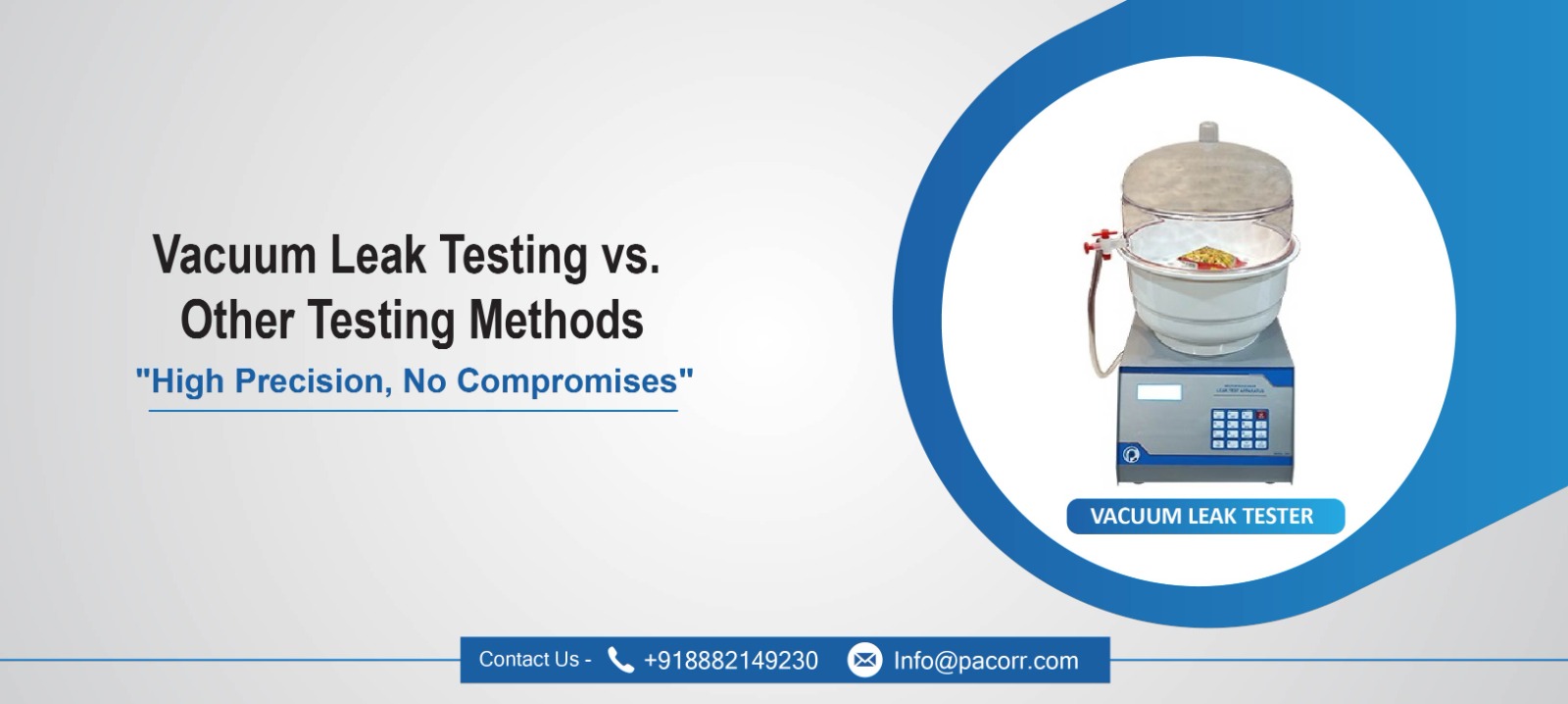
 Hey there, folks! Today, we're diving into the fascinating world of testing methods, and we're about to make it as breezy as a Sunday afternoon chat. Imagine you're buying a new water bottle - you'd want to make sure it's leak-proof, right? Well, industries have their own versions of leaky bottles, and they use different methods to spot those sneaky leaks. One of them is the vacuum leak testing method, and we're going to pit it against some other contenders in the testing arena.
Hey there, folks! Today, we're diving into the fascinating world of testing methods, and we're about to make it as breezy as a Sunday afternoon chat. Imagine you're buying a new water bottle - you'd want to make sure it's leak-proof, right? Well, industries have their own versions of leaky bottles, and they use different methods to spot those sneaky leaks. One of them is the vacuum leak testing method, and we're going to pit it against some other contenders in the testing arena.
Vacuum Leak Testing
Let's start with the star of the show - leak testing. Picture a bottle with a hole in it. Now, suck out the air from the bottle, and if there's a leak, air will rush in. Voila! You've got yourself a leaky bottle. In the industrial world, this is essentially how vacuum leak testing works. It's great for finding leaks in sealed containers, like those fancy potato chip bags or car engine components.
Pressure Decay Testing
Now, let's chat about pressure decay testing. This one's a bit like vacuum testing's cousin. Instead of sucking the air out, you pressurize the container and watch the pressure drop. You have a leak if it goes down. It's like watching a balloon slowly deflate - not as exciting as a fireworks show, but it gets the job done.
Bubble Testing
Bubble testing is like the old-school detective of leak detection methods. You simply apply a liquid or soapy solution on the suspect area and wait for bubbles to pop up. It's like catching a criminal red-handed. This method is often used in labs and workshops, but it's not the best choice for high-stakes situations where you need to spot tiny leaks.
Electronic Testing
Last but not least, we have electronic testing. This one's all about using electronic sensors to detect leaks. It's like having a bunch of mini detectives wired into your system, ready to sound the alarm if they catch a leak. Electronic testing is versatile and can be used in various industries, from automotive to aerospace.
So, here we are, with all these testing methods in our arsenal. Which one's the champion? Well, it depends on the situation. Vacuum leak testing is great for sealed containers, but if you need to spot tiny leaks, helium leak testing or ultrasonic testing might be your heroes. Pressure decay testing is the steady cousin, and bubble testing is like the quirky detective sidekick.
Remember, there's no one-size-fits-all when it comes to testing methods. The choice depends on factors like the type of container, the size of the leak you're hunting, and your budget. It's like picking the right tool for the job - you wouldn't use a sledgehammer to hang a picture, right?
So, next time you're munching on your favorite snack or driving your car, think about the hidden heroes working behind the scenes to keep things leak-free. Whether it's vacuum testing, pressure decay testing, helium leak testing, ultrasonic testing, or good old bubble testing, each method has its time to shine.
And there you have it, folks - a casual chat about the fascinating world of leak testing methods. The next time someone asks you about vacuum leak testing versus other methods, you can spill the beans with confidence.
Thanks to Pacorr Testing instruments, we have all the required quality testing instruments that have helped us to ensure the best quality delivered to our clients.

Danish
Fair Exports Pvt. Ltd.

